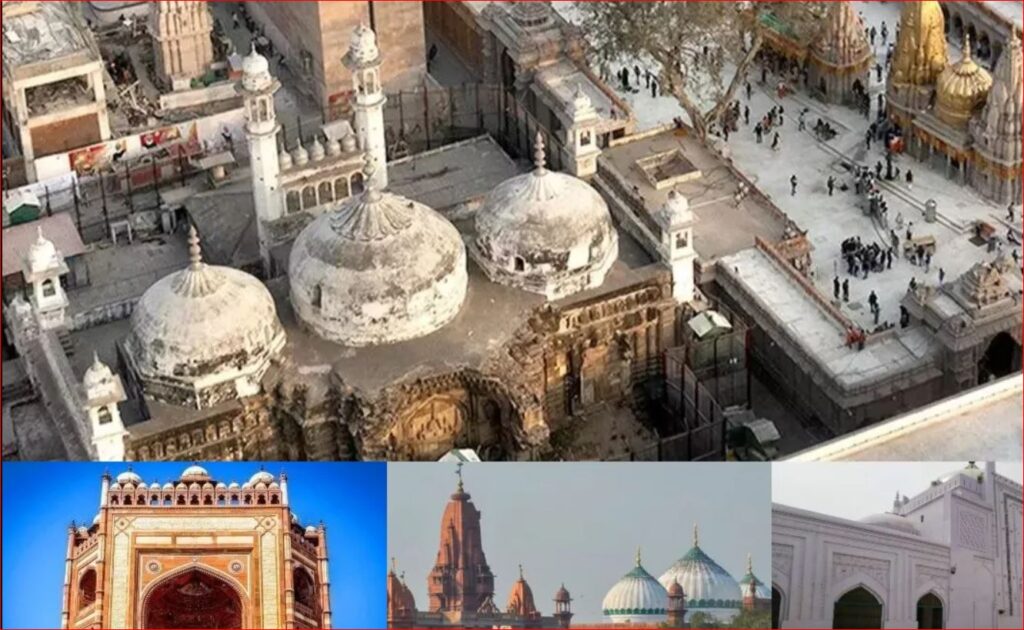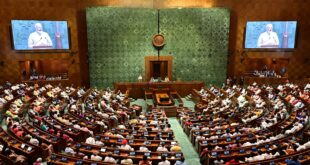Sandeep Pandey
At the airports one sees a ‘Prayer Room.’ It doesn’t say which religion it belongs to. One could go in and pray according to one’s religious practice. This is the model which human society will have to adopt if we are to prevent internecine disputes over religious places in future.
Recently we witnessed a frenzy of court cases with petitioners claiming mosques and dargahs having being built upon temples. Had the Supreme Court not intervened and put a stop on the process there would have been no end to this process in which monuments like Taj Mahal would have followed religious places. But this is only a temporary relief.

Right now the Places of Worship Act 1991 has come to rescue.
But irrespective of what Mohan Bhagwat is saying about Ayodhya being a matter of faith and people should not go looking for a Shivling in every mosque, after all some people may be motivated by faith in other structures and by now we should have learned our lesson that Rashtriya Swayamsewak Sangh or Bharatiya Janata Party functionaries speak in different voices and RSS mouthpiece ‘Organiser’ has already come out with a statement that knowing the history of disputed sites is important for ‘civilisational justice,’ the BJP led union government is perfectly capable of doing away with the Places of Worship Act just as it made Article 370 of the Constitution related to Jammu and Kashmir redundant or enacted the blatantly discriminatory Citizenship Amendment Act in complete violation of Article 14 of the Constitution. Then the floodgates will open once again.
Hence the only solution to this vexatious problem is to agree that people believing in God, if they concur that God is one, must come around to accepting all religious places as universal places of worship. This implies that all places of worship should allow followers of all religions to come in and perform their religious rites or worship according to the practice of their respective religion. In principle, everybody is praying that one God in their own manner under one roof. People will have to be just tolerant to others following different ways of worshiping. In fact, that would be a truly spiritual sight to see people worshiping in different ways in harmony with each other. After all, the objective of religion is to bring tranquility on earth where human society is in peace within and with the outer world.
However, slowly we must move towards a model in practice at the Maharogi Sewa Samiti, Anandwan in Warora, Maharashtra set up by the late Baba Amte, where there are no public religious places. Everybody is free to follow their religion inside their homes. After death everybody is buried under the earth, irrespective of their religion, and a tree is planted at their burial site. No tomb is allowed to be built.
Then the question is what would happen to the existing religious structures? All religious places would be converted into places from where welfare programmes would be run. Langars at Gurudwaras are an excellent example of a service being provided by a religious place. The beauty of the langars is that this service is open to all. It is not restricted to the followers of Sikhism. In fact, Sikhs go out of the way to provide the service of langars to all without discrimination based on religion, race, caste or gender, So, we saw Khalsa Aid set up langars in Bangladesh to cater to Rohingya refugees from Myanmar and langars were set up on Poland border for people fleeing Ukraine when Russia attacked it. There is no significant Sikh population in Bangladesh or Ukraine-Poland. The point is when it was required the langar service was pressed into action. The farmers movement on the Delhi borders sustained for 13 months because of the langars in which contributions were pouring in from villages of Punjab and Haryana. Families from villages has come and taken responsibility for running the kitchens of langars. This spirit of service is the essence of religion and followers of other religion need to learn from Sikhism. Hence, all places of worship must become places from where some human welfare work is performed. It could be a education programme, a health care programme, a women empowerment programme or simply a langar. As the essence of religion is service, there can be no better use of religious places than run human welfare programmes from their premises.
A Sarva Dharam Sadbhav Trust has been created in Ayodhya with the Mahant of a Ram-Janki temple, a Muslim activist, a Dalit scholar from Bihar, a Transgender and this writer, an atheist, as its trustees. This trust wishes to create such model religious places for future. A beginning has been made from Barabanki district in Uttar Pradesh. A temple has been renovated in Aseni village which displays on outside wall that people of all caste and religion are welcome to the temple and everybody is free to worship according to their method of worshiping. We hope more such places would come up soon. This is the only hope for a peaceful and friendly world.
 Jubilee Post News & Views
Jubilee Post News & Views





